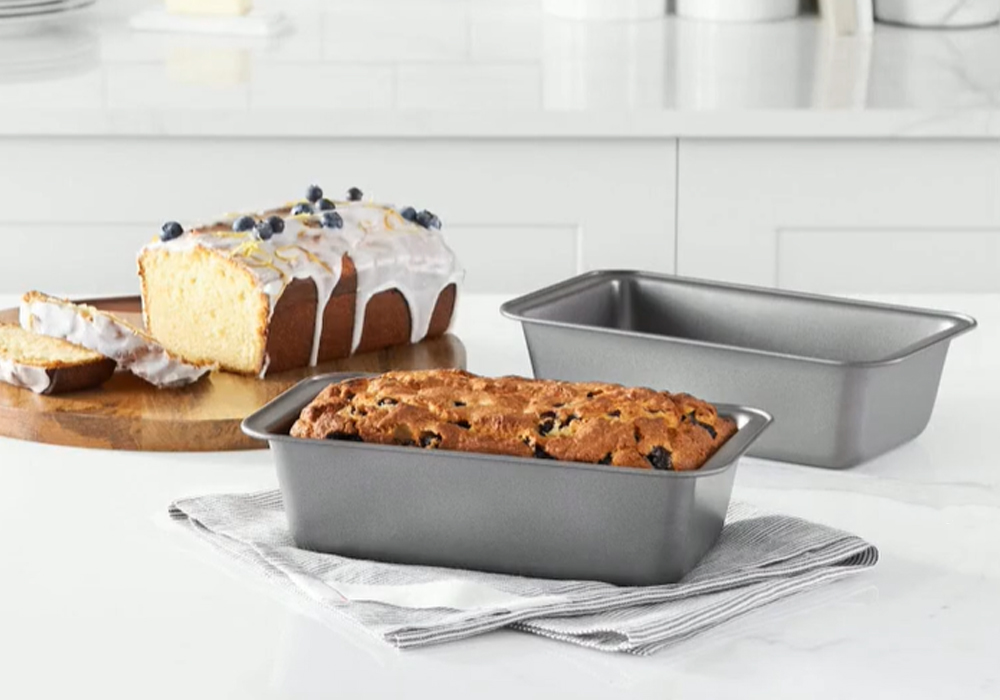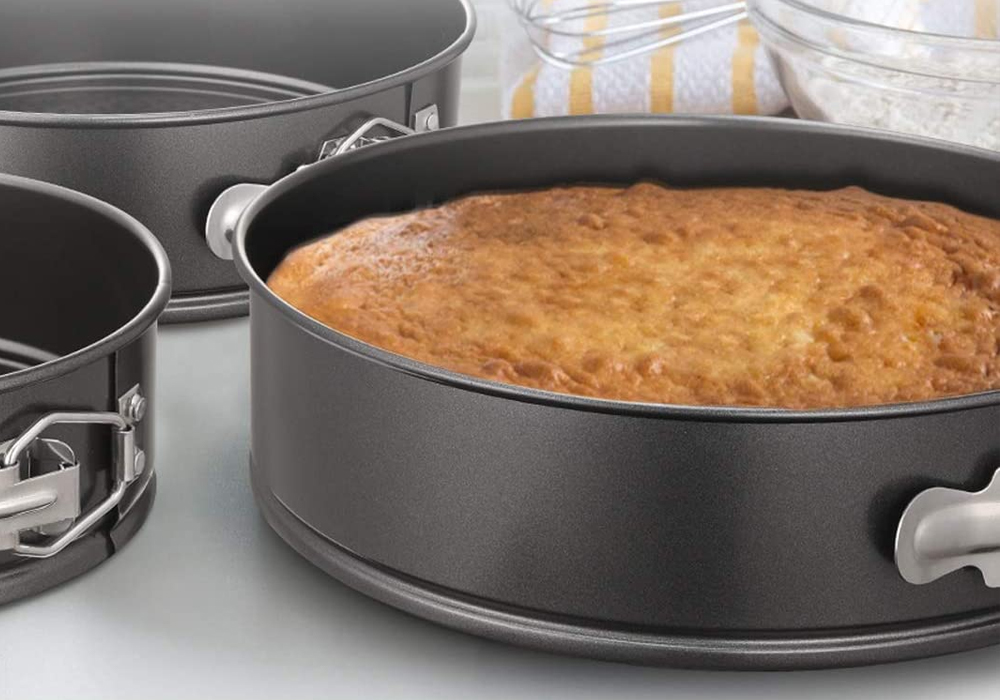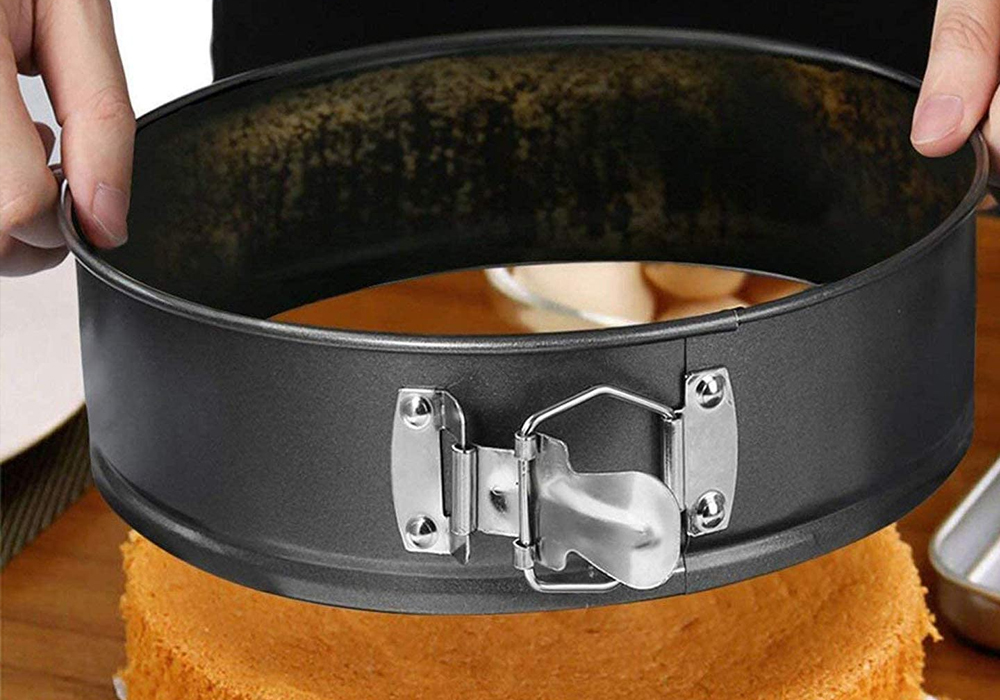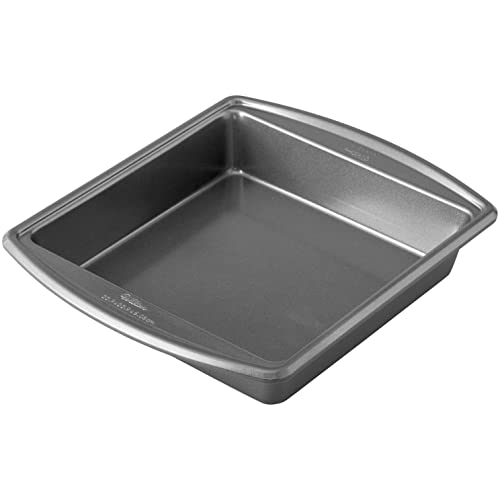Baking is a hobby that calls for much precision. In order to come up with a well-baked product, may things have to be considered. Ingredients, baking temperature, mixing technique and yes, even the baking pan, counts! If you’re new into baking and starting to invest in bakeware, you probably are trying to figure out which baking pan is the best when it comes to your baking needs. This question, however, will be quite difficult to tackle as the material and size of the pan will really depend on what baked good you plan to create.
Pan sizes and shapes are often already a given in recipes so there isn’t really much to discuss when it comes to that. However, when it comes to the material from which pans are made, indeed, there is much to think about.
Baking pans can be made from different materials ranging from aluminum to silicone. Each will have their own merits, as well as disadvantages. Although there are many variations coming out these days, below are the more basic ones which you can use as you try and immerse yourself into the wonderful world of baking.
This website is supported by readers. As an Amazon Associate we earn from qualifying purchases.Aluminum
The more common and more affordable types of baking pans are usually made from aluminum. They vary in thickness and make. Their uses vary depending on what item you plan to use them on. The three basic kinds of aluminum baking pans are aluminum foil baking pans, plain aluminum pans and anodized aluminum pans.
Baking pans made from aluminum foil are usually made from heavy gauge aluminum foil. They are the cheapest, most affordable baking pans available in the market as they are considered to be disposable. Despite this, aluminum foil baking pans can indeed be reused for as long as they ae cleaned properly using scrubbing pads and dishwashing liquid.
Being made from aluminum, they easily conduct heat. This type of baking pan is usually used for making bread and pizza since these products require a lot of heat which can easily be absorbed by the material and redistributed to the baked product. Caution should be taken when it comes to the baking temperature though since the aluminum foil pans are much thinner as compared to other types of baking pans.
Pure aluminum baking pans made from either heavy gauge or thinner gauge of aluminum are available. Both are good conductors of heat so they both can be good for baking cakes. Both are pretty durable as well.
The only disadvantage of thinner gauged aluminum pans is that they have the tendency to warp at very high temperatures. Heat distribution is also not as even with thinner gauges of aluminum pans so there may be inconsistencies in the texture of your baked products. Aluminum also has a tendency to react to acid. Using aluminum pans in recipes that call for the use of acidic ingredients, such as lemon and buttermilk, may not be a good idea. Besides possible discoloration of your baked products, using acidic ingredients might also lead to a bit of a metallic taste on your baked products due to the chemical reaction of aluminum and the acid.
Just like aluminum foil baking pans, pure aluminum pans are also quite easy to clean. You can use plain dishwashing liquid and scouring pads to clean these kinds of pads. They do not really any special type of care for maintenance.
Anodized aluminum pans may be either silver-anodized or hard anodized.
Both these types of anodized pans go through an electrochemical process meant to harden the outer layer of the aluminum pan. For hard anodized aluminum pans, the process takes longer resulting in a harder outer surface as compared to silver anodized aluminum pans Hard anodized aluminum pans are also ten times thicker as compared to silver anodized aluminum ones.
Aluminum anodized pans are made to be scratch-resistant although it would still be best to not use sharp objects, such as metal forks and knives, on these types of pans as they may still lead to minor scratches on the pan’s surface. Anodized aluminum pans have non-stick surfaces and are made to be rust-resistant as well.
They are very good conductors of heat so you can expect to have evenly baked products that do not go through much browning. The baking temperatures and time though, when using anodized aluminum products, may have to be reduced. Since these pans are good conductors of heat, the pans heat up faster and are able to retain heat much longer.
When using these pans, you will have to adjust on the time and temperature in order to make sure that you do not end up with baked products that are too dry or too crusty.
Non-stick Bakeware
Non-stick bakeware is usually made from steel or aluminum but with a non-stick coating. This makes it easy to bake and release baked goods like muffins and cupcakes. Non-stick bakeware usually eliminates the need for parchment paper linings when baking because of the non-stick surface as well.
This bakeware usually has a darker color due to the non-stick coating. The darker color makes this bakeware more absorbent to heat. This property, along with rapid heat conduction, makes it easy for this kind of bakeware to heat up. Therefore, baking time and temperature should also be monitored and adjusted since there may be a tendency for your baked products to become too dry or too brown.
Special care is needed when using non-stick cookware. Highly abrasive detergents and cleaning pads should not be used when cleaning non-stick bakeware. Metal utensils should also not be used on non-stick bakeware. These kinds of materials may cause scratching on the surface of non-stick cookware and destroy it.
Make sure too that you allow the bakeware to cool down before washing it so that you don’t harm the non-stick coating. Use a soft sponge or cloth when scrubbing non-stick pans using plain dishwashing liquid. Use warm water to rinse and preferably, use a soft microfiber dishcloth to dry your bakeware.
Glassware
This type of cookware makes use of tempered glass that can withstand high temperatures. They can be used in both traditional and microwave ovens. They can also be used for storage in refrigerators and freezers.
Tempered glass is also a good conductor of heat so baked products using glassware result in a good degree of browning. Unlike metal bakeware, glassware does not react to acid; hence, it is ideal to use in recipes which make use of acidic ingredients such as cocoa powder, lemon, and buttermilk.
Glassware tends to heat up fast and it also can retain heat for a long period of time, even when taken away from the heat source. Therefore, when using glassware for baking, it is best to reduce the baking temperature by 25 degrees Fahrenheit in order to avoid dryness and overbaking in your baked products.
Silicone
Silicone bakeware are basically new types of bakeware that are slowly gaining popularity. They are made of silicone and are quite flexible. Baked products do not stick to silicone so baked products using these bakeware are quite easy to release.
Silicone bakeware can be used in a great range of temperature, from 40 to 580 degrees Fahrenheit. They can, therefore, be used in conventional ovens, microwave oven, refrigerators and freezers.
One thing to remember with silicone bakeware though is that this type of bakeware does not retain heat. Once removed from the heat source, the baking process stops altogether so baking temperature and time need not be adjusted. This type of bakeware is considered to be dishwasher safe and they can be folded away for storage.
Stoneware
Stoneware has a highly polished surface since this kind of bakeware goes through very high temperatures when being made. This type of bakeware does not easily absorb heat so it takes a while before the baking process to start.
It can, however, evenly distribute heat resulting in baked products that have good consistency and texture with not much browning. Baked products though tend to stick to this kind of bakeware so it would be wise to use nonstick sprays before pouring in any mixed ingredients like batter into the bakeware. It would also be good to season the stoneware using oil.
Soap and water should not be used to clean this type of bakeware. Instead, just scrape off any food that has stuck to the bakeware and rinse using warm water.
Tinned Steel
Layers of steel which are coated in tin make up tinned steel bakeware. This type of bakeware does not easily heat up although when it does, expect it to heat evenly. Heat conduction lessens though in time so older tinned steel bakeware may need longer baking times.
Stainless Steel
Of all materials, baking pans using stainless steel are probably the worst when it comes to heat conduction. Heat distribution using this type of bakeware is also not even , resulting in inconsistent textures and consistency.
Maintenance is not a problem when it comes to this type of bakeware as it can be cleaned using warm, soapy water and any kind of cleaning pad.
Additional tip:
When baking cakes, consider the type of cake you plan to make when choosing a pan. Pound cakes do not need to rise much and they tend to stick to pan surfaces. In this case, pans with non-stick surfaces come highly recommended.
For sponge cakes, chiffon cakes and angel cakes, non-stick surfaces are not recommended since the batter of these cakes need to stick to the sides of the pans in order for them to rise properly.
There are many things to consider when baking a certain type of food. Baking is such a meticulous process that every stage and every material used counts. It also takes a lot of patience to perfect the process. Combine all of these, along with the right choice of pan, and you can surely create baked goods that will be a delight to many people.





